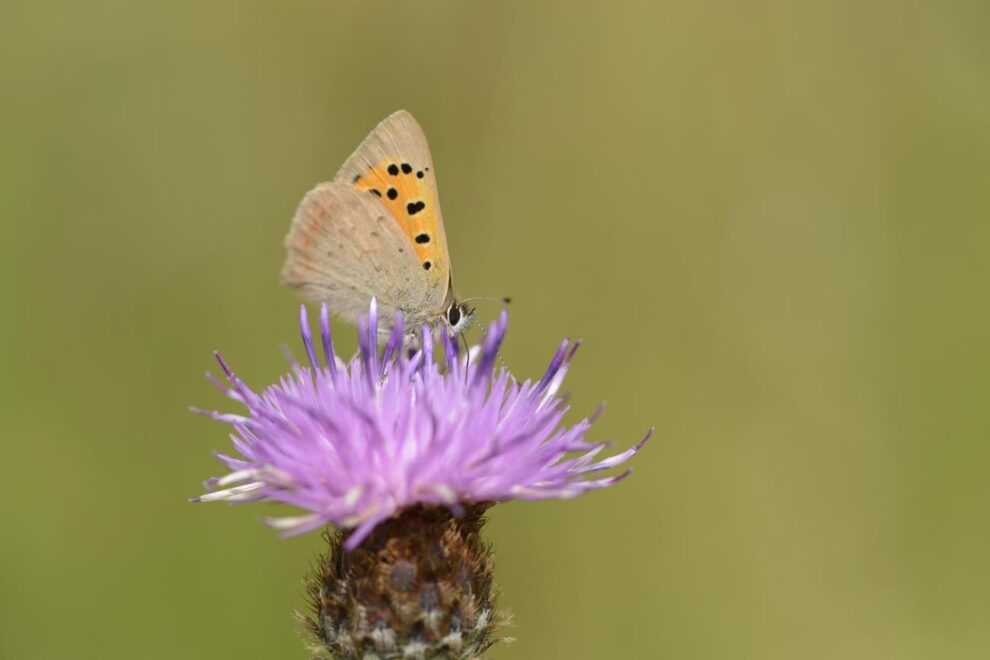There has been a 35 percent increase in the number of butterflies in Scotland over the last four decades – but some species, such as the small copper, are now in significant decline, according to a new report from NatureScot.
Small copper declines have been recorded in other parts of the UK in previous years, but this is the first time a significant decline has been observed in Scotland. Reasons for the almost halving in numbers include climate change and habitat loss, with sheep’s sorrel, one of its main larval foodplants, in decline since the mid-20th century.
Overall, the trend for butterflies is positive – although some of this is due to butterflies moving northward as the climate changes. NatureScot’s latest Scottish Biodiversity Indicator report published today finds that there has been a 35 percent increase in abundance across all recorded butterfly species.
Of the 20 species analysed, nine have increased significantly and three have decreased. The remaining eight show no significant change. The largest increases were seen in red admiral, orange-tip and peacock butterflies, with climate change and local weather conditions being the likely drivers of change. The three species showing significant declines are small copper, grayling and small tortoiseshell butterflies. Population changes are also affected by habitat loss and fragmentation, pesticides, and pollution.
Simon Foster, NatureScot Trends and Indicators Analyst said: “Butterfly populations can vary markedly from year to year depending on factors such as the weather and availability of food, but it’s reassuring to see that the overall long-term trend is improving.
“When we look at individual species, however, there are some that are clearly struggling, such as the small copper and grayling butterflies. Habitat and food loss appear to be major factors in their declines so we’re working hard to support them.
“Gardens are becoming an increasingly important habitat for butterflies like the small copper, and wildlife-friendly gardening could counteract a more general decline in urban butterflies. Urban greenspaces are also vital habitats and projects such as the Central Scotland Green Network are helping connect areas for pollinators, including butterflies.”
There is a lot of work going on to support pollinators across Scotland, including implementing the Pollinator Strategy for Scotland, which features many amazing community projects such as wildflower meadows. As well, farmers across Scotland are putting in place nature-friendly practices such as unsprayed field margins. These can help butterflies and other beneficial insects.
Targeted action works well, particularly for species with specific habitat requirements. The northern brown argus and small blue butterfly are benefitting from conservation efforts from projects such as Species on the Edge, which involve volunteers and conservation organisations to actively manage butterfly habitats.
Simon adds: “We can all do something to help Scotland’s butterflies. If you would like to help, one idea is to get involved in butterfly monitoring. It’s easy, fun and can help us improve our knowledge of what is happening where, giving us the best chance of targeting conservation measures most effectively.”
Source: Nature Scot Nadar Alba











